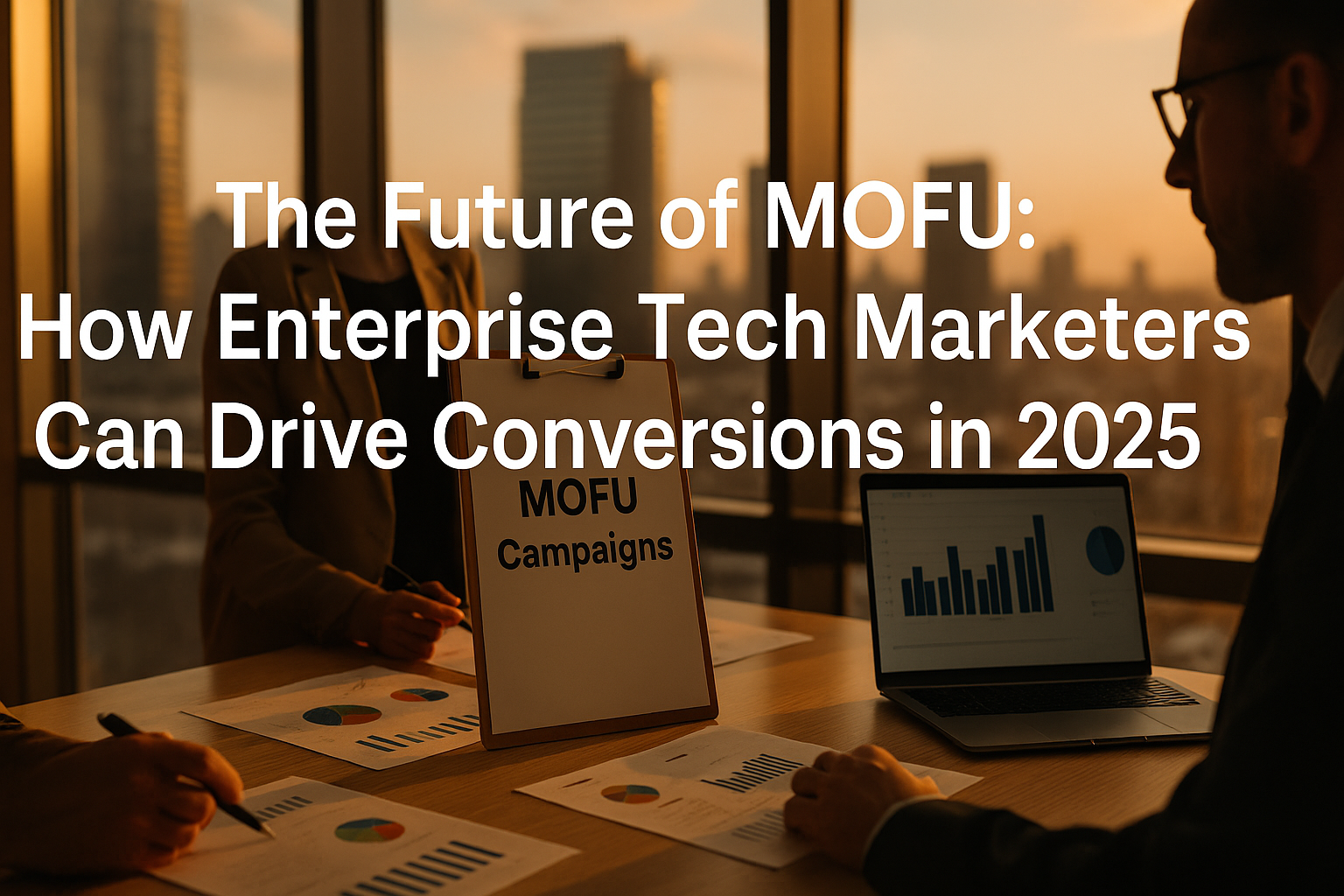Turning MDF into Measurable Revenue: The Case for Pay-for-Performance Programs
Channel Marketing
As enterprise tech buyers become more selective and B2B funnels grow longer, the middle of the funnel (MOFU) has become the critical conversion zone for demand generation teams. This blog explores how enterprise marketers can optimize MOFU campaigns in 2025 — and how Site Ascend helps turn mid-funnel engagement into sales-ready opportunities through precision outreach and qualified meeting generation.
-
Demand Generation Strategy

Introduction
The middle of the funnel (MOFU) is where enterprise tech deals are either accelerated or lost. It’s the stage where prospects have shown intent but haven’t yet committed — a gray area where most demand generation strategies fall short.
In 2025, MOFU strategy is no longer about nurturing leads with vague messaging or generic email sequences. It’s about personalization, precision, and progression. Demand generation leaders are rethinking how to engage, qualify, and convert leads by aligning sales and marketing in real time — ensuring that no buyer intent signal goes unnoticed.
For enterprise technology marketers, mastering the MOFU isn’t optional anymore. It’s the key to driving measurable pipeline velocity and converting marketing-qualified leads (MQLs) into high-value opportunities that actually close.
What MOFU Means for Demand Generation Marketers
The MOFU stage sits between awareness and decision — the point where leads move from curiosity to consideration. For demand generation teams, this is where the handoff from marketing to sales begins to blur.
In B2B enterprise tech, MOFU efforts typically include:
What’s changing in 2025 is how marketers measure and activate MOFU performance. Instead of relying solely on marketing automation metrics, forward-thinking teams are leveraging intent data, behavioral scoring, and predictive models to prioritize leads most likely to convert.
The result? A smarter, faster, and more accountable middle-funnel process that directly influences revenue outcomes.
Common Challenges Marketers Face
Even with the best technology stacks, many enterprise marketers still struggle to turn MOFU engagement into pipeline movement. The most common challenges include:
Misalignment Between Marketing and Sales
Leads often fall into a void when definitions of “qualified” differ across teams. Marketing may pass over leads that sales doesn’t consider ready — or worse, sales never follows up on leads that are ready.
Data Silos and Fragmented Workflows
Information gathered from marketing automation, CRM, and intent platforms often remains disconnected, leading to missed signals and poor handoffs.
Inefficient Lead Nurturing
MOFU campaigns often focus on volume over value. Without segmentation or real buyer insights, nurture streams can feel generic and fail to push prospects toward a meeting.
Measurement Gaps
Many marketers still rely on top-of-funnel engagement metrics — like email clicks or form fills — instead of revenue-impact indicators such as conversion-to-opportunity rates or lead velocity.
In short, MOFU inefficiencies can quietly drain pipeline potential and slow down enterprise growth.



.png)



.png)
%201.png)


.png)
%201.png)


.png)








Solutions That Work
The most successful enterprise marketers are evolving their MOFU strategies around three core principles: precision, timing, and trust.
Precision Through Data-Driven Targeting
Modern MOFU campaigns begin with rich data insights. By using intent platforms, CRM enrichment, and behavioral signals, marketers can identify which accounts are actively evaluating solutions and personalize their outreach accordingly.
Timing Through Intelligent Lead Progression
Leads shouldn’t sit idle. High-performing teams use engagement scoring and qualification criteria to determine when a lead is sales-ready — ensuring sales reps focus their time on prospects who have clear buying intent.
Trust Through Consistent Engagement
The MOFU is the ideal time to build credibility. Educational webinars, product demos, or thought leadership pieces can reinforce your solution’s value while keeping prospects engaged until they’re ready for a direct conversation.
By aligning data, messaging, and qualification strategy, enterprise tech marketers can convert interest into real opportunities — and build a stronger bridge between marketing activity and sales results.
Actionable Steps for Marketers
Here are key steps to strengthen your MOFU strategy in 2025:
Marketers who adopt these steps are positioned to create predictable and repeatable pipeline growth.
Comparison of Market Solutions
Many enterprise marketers attempt to manage MOFU activities internally — relying on marketing automation and CRM tools to bridge the gap between awareness and sales engagement. While this can work for smaller-scale campaigns, it often limits scalability and lead quality.
Outsourced or hybrid approaches, particularly those backed by real-time data and outbound expertise, deliver stronger results. They ensure that leads are nurtured, qualified, and converted into meetings that directly drive pipeline outcomes.
Unlike generic providers that focus on volume, premium demand generation partners emphasize quality — using director-level targeting, performance-based delivery, and complete sales-readiness validation to ensure your MOFU spend produces measurable results.
Conclusion
The future of MOFU in enterprise tech isn’t about sending more emails — it’s about orchestrating precision engagement that bridges marketing and sales. As data, technology, and buyer behavior evolve, marketers who master the middle of the funnel will own the pipeline in 2025.
By tightening alignment, leveraging intent insights, and redefining qualification, demand generation leaders can unlock the full potential of their MOFU strategy and turn engagement into revenue.
Ready to accelerate your pipeline?
Start a pilot with Site Ascend and see how precision demand generation drives meaningful conversations and measurable growth.
What makes MOFU campaigns different from TOFU or BOFU?
MOFU campaigns target prospects who already know your brand and are evaluating solutions. Unlike TOFU (awareness) or BOFU (decision), MOFU focuses on nurturing engagement and qualification.
How can data improve MOFU performance?
Data enables marketers to personalize outreach, prioritize leads based on intent, and hand off only the most sales-ready prospects. This prevents wasted effort and improves close rates.
What KPIs best represent MOFU success?
Metrics like conversion-to-opportunity rate, lead velocity, and SQL creation are stronger MOFU indicators than clicks or downloads. They show how effectively your campaigns turn engagement into sales momentum.



Start your pilot campaign today and explore the full range of Site Ascend's demand generation capabilities. Experience firsthand how we can enhance your efficiency, streamline your processes, and drive growth.
RELATED